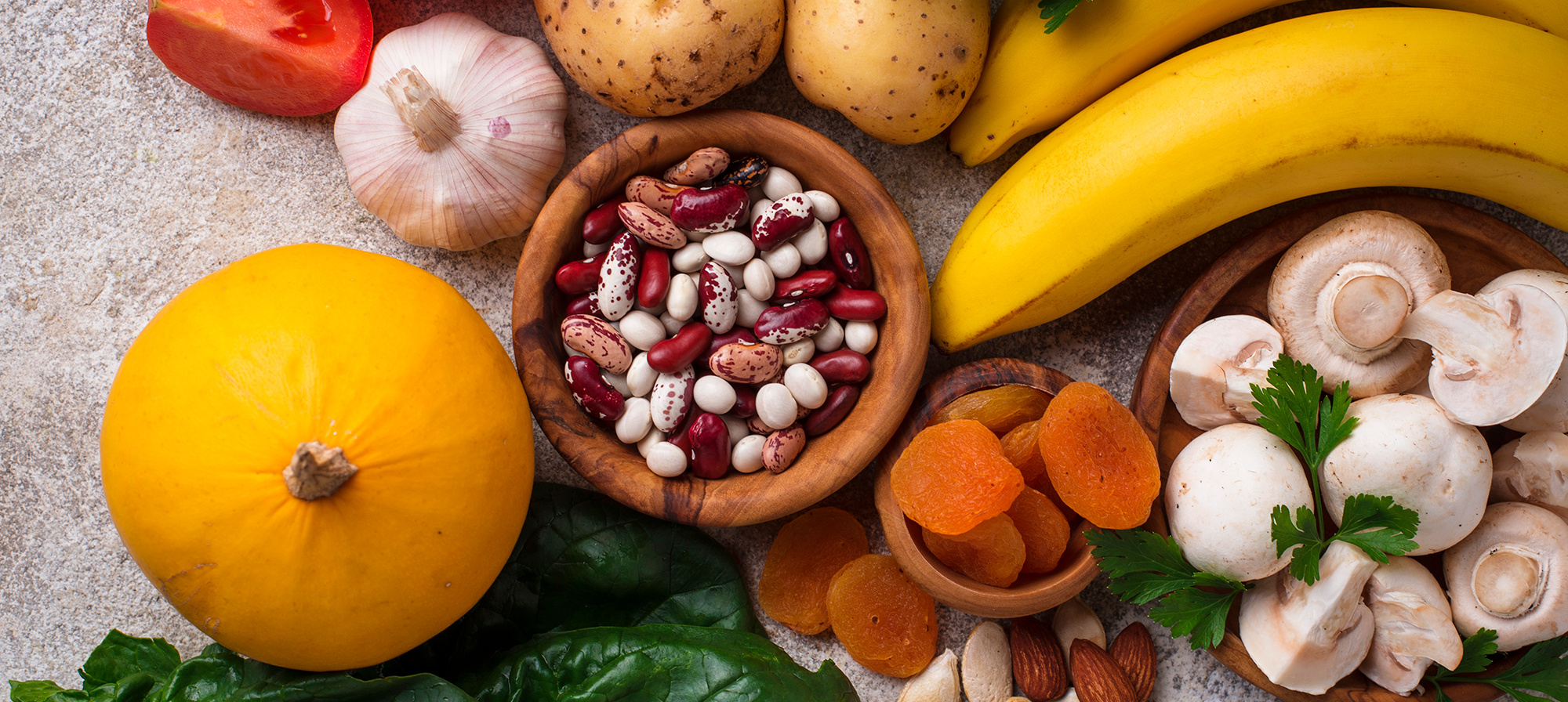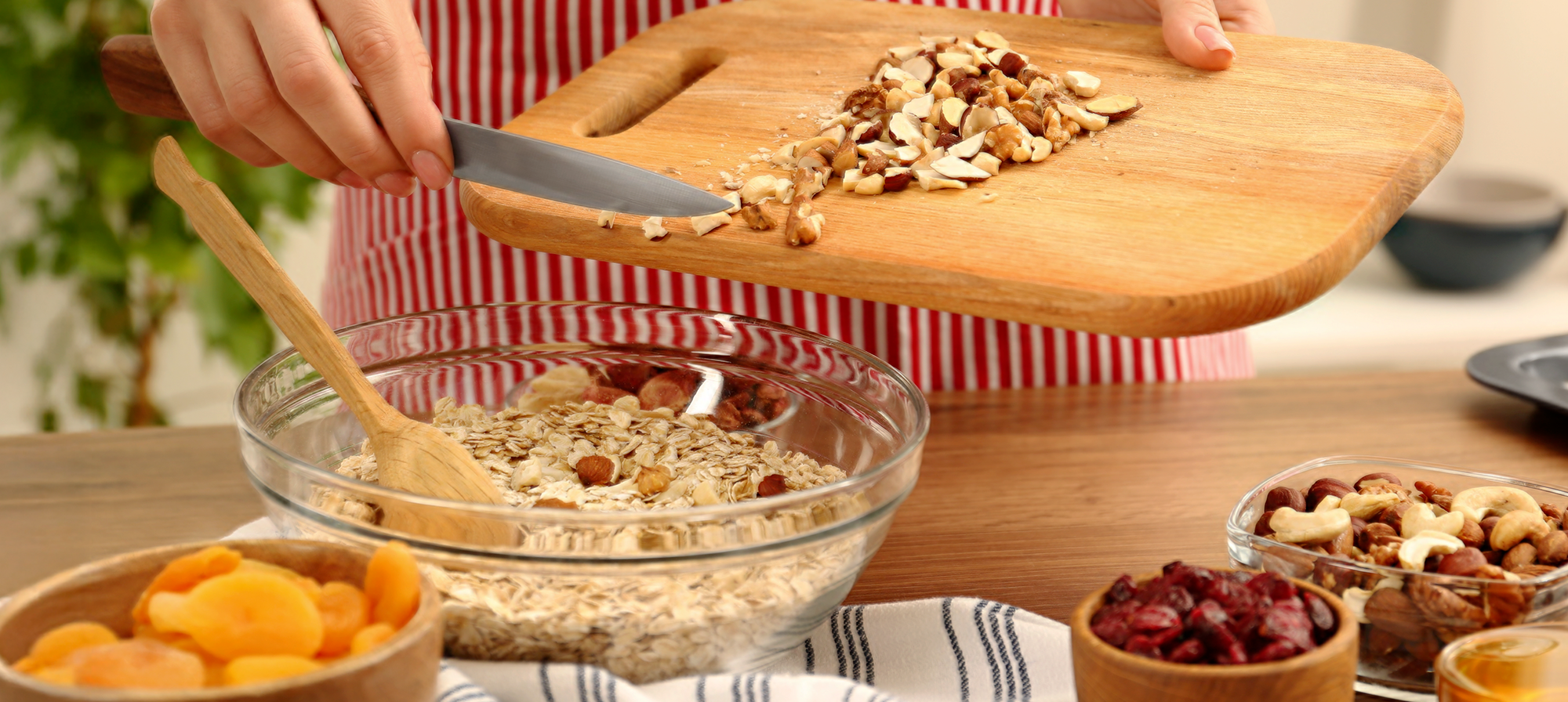Excess sodium is well-known for its potentially harmful effects on your health and heart. But did you know that potassium can help counteract those effects?
Sodium and potassium are just 2 of the essential minerals your body needs. But whereas most Americans get too much sodium, they don’t get enough potassium. Why does this matter? Potassium works with sodium. Together, they help balance fluids in your body. Plus, potassium boosts your heart health. It helps reverse the effects of too much sodium, supporting healthy blood pressure and lowering your risk of heart problems.

Effects of sodium
While sodium gets a lot of negative attention, it is a necessary electrolyte for your body. (Electrolytes are essential minerals that have an electric charge.) Sodium helps balance fluids in your cells and aids them in absorbing nutrients. Still, it’s important to remember that sodium is plentiful in food. You usually don’t have to worry about getting enough. Instead, you likely need to think about not getting too much.
The recommended amount of sodium is no more than 2,300 milligrams per day. However, you really only need a fraction of that amount. A better goal is to aim for less than 1,500 milligrams per day.
The average American consumes much more than that—around 3,500 milligrams per day. Most of this sodium does not come from your saltshaker. It comes from processed and prepared foods, like deli meats, pizza, soups, burgers, and savory snacks.
Too much sodium may lead to high blood pressure and an increased risk of heart disease and stroke. It can also cause less serious but uncomfortable side effects. You may retain water and notice bloating and puffiness. It can also upset your gut health.
 Benefits of potassium
Benefits of potassium
Like sodium, potassium helps balance fluids in your cells. In fact, they work together to do this. As potassium enters the cell, sodium leaves, and vice versa. Through this exchange, potassium helps your body get rid of excess sodium.
Potassium also helps your muscles contract, including your heart, which is a muscle. It truly keeps your heart beating. Potassium is also vital for overall heart health. It has the opposite effects of sodium, helping to lower blood pressure and the risk of heart disease. It’s recommended that women get 2,600 milligrams of potassium per day and men get 3,400 milligrams per day.
In addition to supporting your heart health, potassium can help with muscle aches. Cramped or tired muscles can be a sign that your potassium is a bit low. Reach for some potassium-rich foods to see if it helps, and if not, talk with your doctor.

Putting potassium on your plate
The best way to get potassium is through whole foods. As many people already know, bananas are a good source of potassium. There are also many more options available! These foods have even more potassium than a banana:
- Sweet potatoes
- Baked potato (with skin)
- Spinach
- Stewed tomatoes
- Butternut squash
- Lima beans
- White beans
- Cantaloupe
- Kiwifruit
Even if they have less potassium than a banana, there are many other potassium-rich foods you can add to your diet. Check out this list from Dietary Guidelines for Americans for more food sources of potassium. It also lists the amount in each food, so you can work toward getting your recommended daily amount. Find potassium-rich foods you like and try to add at least one to each meal.
For a potassium-packed dinner, try this Spinach Vegetable Casserole. This recipe features 3 potassium powerhouses: spinach, tomatoes, and navy beans. Plus, it’s low in calories and high in fiber and protein. It doesn’t get much more wholesome than that!

Too much potassium
For most people, getting too much potassium isn’t a concern. You should still be aware that too much potassium can be dangerous. This is especially true if you have a kidney disorder.
Your kidneys are responsible for removing potassium from your blood. If your kidneys can’t keep up, that potassium builds up in your body and can lead to heart issues.
Even without a kidney disorder, as you get older, your kidneys have to work harder to remove potassium. This is why it’s important to not go overboard when adding potassium. Just reach for a few potassium-rich foods throughout the day. Also, if you have any kidney issues or take medications, be sure to talk with your doctor about how much potassium you need.

Balancing sodium and potassium
While potassium helps your body get rid of sodium, it can only do so much. You need to be mindful of your sodium intake, too. You can do wonders for your heart by eating more potassium and less sodium. This combo can help lower your risk of cardiovascular disease and keep your blood pressure at a healthy level. To balance these minerals, focus on eating more whole foods, especially fruits and veggies, and fewer processed foods.
Drinking plenty of water is also important for keeping your fluids and electrolytes in balance. Water helps flush out excess minerals, including sodium. Plus, dehydration is more likely as you age, and it can have a number of side effects. Paying attention to your fluid intake can help keep you at your healthy best.

Final thoughts
Potassium is a heart-healthy electrolyte, and most people don’t get enough of it. So, take a look at your current diet. As long as it’s safe for you to do so, see where you can add some potassium-rich foods to your meals. Your heart (and other muscles) will thank you.
Not a Silver&Fit® member? Learn more about everything the program has to offer, including more helpful healthy living tips like this, here on our website.
This information is not intended to take the place of regular medical care or advice. Please check with your doctor before using this information or beginning any self-care program. Images used for this article do not depict any members of the Silver&Fit program.
References
American Heart Association. (2024, January 5). How much sodium should I eat per day? https://www.heart.org/en/healthy-living/healthy-eating/eat-smart/sodium/how-much-sodium-should-i-eat-per-day
American Heart Association. (2024, June 10). A primer on potassium. https://www.heart.org/en/healthy-living/healthy-eating/eat-smart/sodium/potassium
Cleveland Clinic. (2021, September 24). Electrolytes. https://my.clevelandclinic.org/health/diagnostics/21790-electrolytes
Cleveland Clinic. (2024, March 25). The power of potassium: Why you need this essential mineral. https://health.clevelandclinic.org/potassium
Harvard T.H. Chan School of Public Health. (2021, November 13). Reducing sodium and increasing potassium may lower risk of cardiovascular disease. https://www.hsph.harvard.edu/news/press-releases/reducing-sodium-and-increasing-potassium-may-lower-risk-of-cardiovascular-disease/
U.S. Centers for Disease Control and Prevention. (2024, January 31). About sodium and health. https://www.cdc.gov/salt/about/index.html
U.S. Centers for Disease Control and Prevention. (2024, January 31). Effects of sodium and potassium. https://www.cdc.gov/salt/sodium-potassium-health/index.html
U.S. Department of Agriculture and U.S. Department of Health and Human Services. (n.d.). Food sources of potassium. Dietary Guidelines for Americans. https://www.dietaryguidelines.gov/food-sources-potassium
U.S. Food and Drug Administration. (2024, March 5). Sodium in your diet: Use the nutrition facts label and reduce your intake. https://www.fda.gov/food/nutrition-education-resources-materials/sodium-your-diet
This article was written by Keleigh Somes, edited by Gail Olson, and clinically reviewed by Elizabeth Thompson, MPH, RDN, on November 22, 2024.





